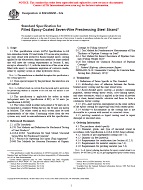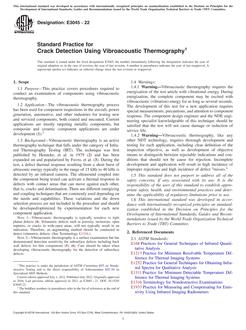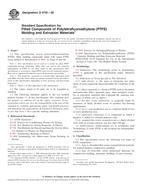1.1 This test method covers the laboratory determination of the rate at which copper is released from an antifouling coating in substitute ocean water. The practical limits for quantifying copper release rates by this method are from 1.8 to 500 g cm-2d-1. This range may be extended to 0.2 to 500 g cm-2d -1 if the analytical procedure described in is followed.
1.2 The procedure contains the preparation steps for the release rate determination of copper from antifouling paints including apparatus, reagents, holding tank conditions, and sampling point details. Analysis for the concentration of copper in substitute ocean water requires the accurate determination of copper at the low parts g L-1 (parts per billion, ppb) level. To detect and correct for reagent impurities, acceptable analytical precision standards are necessary. Therefore, the limit of quantitation (LOQ) for copper in substitute ocean water for the analytical method shall be 10 g L-1 (10 ppb) or less. The procedure for determining the LOQ for copper in substitute ocean water for the analytical method is found in .
1.3 A suitable method is described in (graphite furnace atomic absorption spectroscopy, GF-AAS). Other analytical methods may be utilized with relevant procedural changes, as needed, to accommodate selected specific methods. Such methods must meet the limit of quantitation for copper in substitute ocean water of 10 g L-1(10 ppb) or less. See 1.2.
1.4 This test method has not been validated to reflect in situ copper release rates for antifouling products and, therefore should not be used in the process of generating environmental risk assessments. In-service release rates of antifouling (AF) coatings change with natural variability in seawater chemistry, temperature, and hydrodynamic regime.
1.5 The values stated in SI units are to be regarded as the standard. The values given in parentheses are for information only.
1.6 This standard does not purport to address all of the safety concerns, if any, associated with its use. It is the responsibility of the user of this standard to establish appropriate safety practices and to determine the applicability of regulatory limits prior to use.
Product Details
- Published:
- 07/01/2005
- Number of Pages:
- 10
- File Size:
- 1 file , 150 KB


